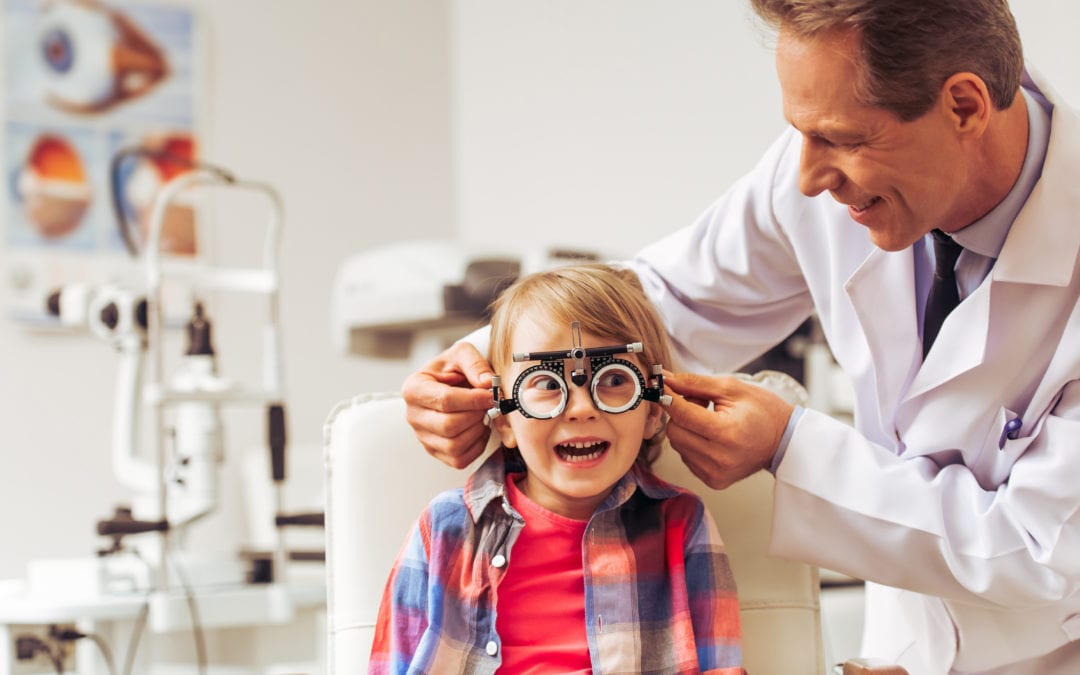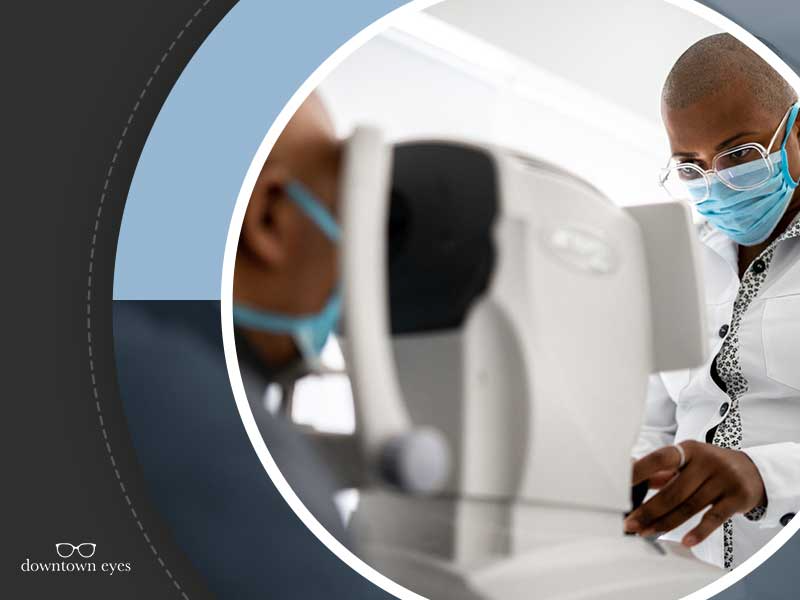Reliable Eye Doctor for All Your Vision Needs in Riverside
Reliable Eye Doctor for All Your Vision Needs in Riverside
Blog Article
The Comprehensive Eye Exam: What to Anticipate During Your Visit to the Eye Physician
A visit to the eye medical professional for a comprehensive eye examination is even more than a regular check-up; it is a vital step in guarding your visual health and wellness. What specifically happens throughout the eye health evaluation, and how does it influence the prescription procedure?
First Assessment
The preliminary assessment throughout an eye test serves as an essential foundation for understanding an individual's aesthetic wellness requirements. This stage sets the tone for the whole evaluation procedure, permitting the optometrist to gather important details concerning the person's medical background, lifestyle, and certain vision problems. By carefully examining any kind of pre-existing conditions, medications, or previous surgical treatments, the eye care specialist can customize the assessment to address specific needs effectively.

Additionally, the initial examination is a possibility for people to articulate any type of issues or concerns, cultivating a collaborative relationship with their doctor. This interaction not just ensures that the individual feels educated and comfy however likewise encourages them to get involved actively in their eye health monitoring. Collectively, these conversations enable the eye doctor to devise a tailored assessment plan, making sure optimum care and accurate medical diagnosis.
Visual Acuity Examination
Beginning the core parts of an eye examination, the visual acuity test is made to evaluate the sharpness and clarity of a client's vision. This crucial assessment helps identify how well a person can determine letters or signs at a standard distance, usually utilizing a Snellen graph (Eye Doctor). The chart comprises rows of letters that lower in dimension inside out, with the client positioned at a traditional range of 20 feet
During the test, the patient is asked to cover one eye and review aloud the smallest line of letters they can see plainly. This procedure is duplicated for the various other eye. The outcomes are taped as a fraction, with 20/20 vision suggesting typical visual acuity-- where the individual can see at 20 feet what an individual with regular vision can see at that distance.
The aesthetic acuity examination also recognizes possible refractive mistakes such as hyperopia, nearsightedness, or astigmatism, which may demand restorative lenses. By developing a standard of visual efficiency, the test is an essential diagnostic tool that assists the eye treatment specialist in developing an appropriate therapy strategy tailored to the person's special visual requirements.
Eye Health Assessment
Complying with the visual skill examination, an extensive eye health evaluation is carried out to guarantee the overall wellness of the eyes. This important section of the eye examination involves an extensive examination of both the interior and exterior frameworks of the eye. The eye doctor or eye doctor begins by analyzing the eyelids, cornea, conjunctiva, and sclera for any type of indications of infection, inflammation, or irregularities. Using specific tools like a slit lamp, the practitioner acquires an amplified view of the eye's makeup, enabling comprehensive inspection.
With the usage of ophthalmoscopy or fundus digital photography, the retina, optic nerve, and blood vessels are carefully assessed. In many situations, student dilation is performed to enhance visibility of the interior eye frameworks, although this may result in temporary light sensitivity for the individual.
Additionally, intraocular stress is measured to evaluate for glaucoma threat. This is commonly done utilizing tonometry, which can find raised pressure levels that could recommend possible damages to the optic nerve. Jointly, these assessments develop a comprehensive evaluation to keep eye wellness.
Refraction and Prescription
How does one guarantee optimum vision? An essential step hinges on the procedure of refraction and obtaining an exact prescription. Refraction is a sophisticated treatment performed by eye care professionals to determine the specific lens power needed to deal with refractive errors such as myopia, presbyopia, hyperopia, and astigmatism. The goal of this treatment is to examine exactly how light bends as it goes through the eye, enabling the professional to identify whether rehabilitative lenses are necessary for boosted aesthetic skill.
During the refraction process, the individual is asked to check out a phoropter, a device which contains numerous lenses. The specialist will systematically transform these lenses and ask the client to compare quality in between alternatives up until the most effective feasible vision is accomplished. This procedure is crucial in crafting an exact prescription that specifies the appropriate lens power for eyeglasses or contact lenses.
The prescription webpage stemmed from this treatment not only optimizes vision yet likewise acts as a structure for choosing suitable rehabilitative eyewear. It is vital to make certain that prescriptions are regularly updated, as changes in vision can occur with time, emphasizing the value of routine eye assessments. This meticulous focus to information helps keep clear, comfortable vision in day-to-day live.
Follow-Up Referrals

Throughout a follow-up visit, the eye doctor will conduct a series of examinations to evaluate aesthetic acuity and look for any type of modifications in vision that may demand an upgrade to the prescription. Furthermore, the follow-up provides an opportunity to go over any discomfort or concerns experienced with present glasses. Changes can be made to make sure convenience and effectiveness, whether via lens modification or structure modifications.
For people with ongoing conditions such as glaucoma, diabetes-related eye problems, or macular pop over to these guys degeneration, more constant follow-ups might be essential. These visits are vital for taking care of and potentially slowing the development of eye disease. Sticking to these recommendations can substantially contribute to preserving visual health and avoiding long-lasting problems.
Final Thought
The thorough eye examination is an important process for keeping aesthetic health and wellness, including an in-depth analysis of clinical history and vision issues. Key components include the aesthetic skill examination, which assesses sight clearness, and the eye health and wellness assessment, which checks out the total condition of the eyes.
A visit to the eye physician for a comprehensive eye examination is even more than a regular check-up; it is a critical action in securing your aesthetic health.Kicking off the core elements of an eye exam, the visual skill examination is developed to analyze the sharpness and quality Optometrist Riverside of an individual's vision.Following the visual skill examination, a comprehensive eye wellness evaluation is carried out to make certain the overall well-being of the eyes. These visits permit the eye care professional to keep track of changes in vision, upgrade prescriptions, and analyze the total wellness of the eyes. Secret parts include the visual acuity test, which examines sight clearness, and the eye wellness analysis, which analyzes the general problem of the eyes.
Report this page